September is an in-betweener, no longer summer but with some days bringing summer heat, not winter but with some sharp cold at night. The blooms of summer have mainly faded but new flowers offer sustenance to September moths and butterflies. Some fruits are available too; Rowan, bramble, and Elder offer their sweetness to species still in flight.
Oddly, September is a peak month for some species: Red Admiral, Comma and Speckled Wood are abundant in September. Yesterday I counted 54 Speckled Woods in the rather cool, breezy Russellstown Wood, near Russborough House, in County Wicklow. The butterfly is also extremely abundant in the scrublands of the Burren, where its copiousness astonishes, an apparently seasonally discordant richness.
Speckled Wood eggs being laid now are unlikely to produce pupae before winter, but the larvae will pupate next spring or early summer depending on development rates. The resulting adults are likely to fly in May and June after their aunts and uncles have flown in March, April, and early May. This prolonged emergence arising from individuals from more than one generation from the previous year provides a very long first brood, running from later in March to the end of June. A gap occurs in the flight of this species during July, with few flying in this month. However, from August lasting well into September and even October, there is an extended emergence resulting from larvae produced during April-July. According to Thomas and Lewington (2014) not all spring larvae produce second-generation butterflies. Some develop slowly and form over-wintering pupae in autumn.
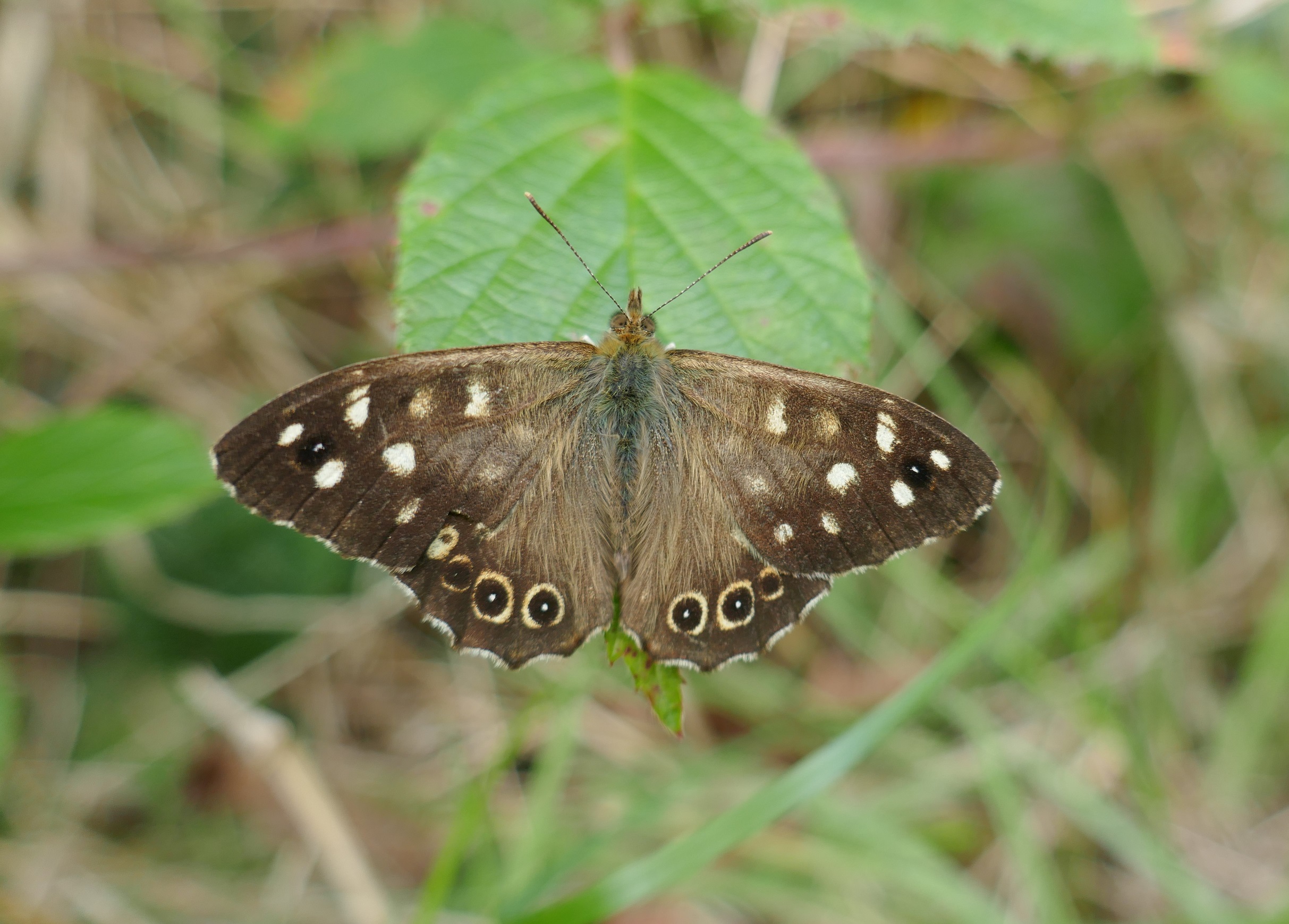
The understanding of the Speckled Wood’s complex brood structure comes from studies done in Britain. Perhaps this applies to our Speckled Woods, but until breeding studies are undertaken in Ireland we cannot confirm this. While our records of the adult butterfly suggest that the butterfly has a similar brood structure here, when I reared the species from eggs laid in late June, all of these reached adulthood in late August and during September. If some spring larvae do not produce butterflies in the same year, do some summer larvae undergo slower development, producing over-wintering larvae or over-wintering pupae in autumn?
I suspect that there is more to learn about the Speckled Wood’s brood structure in Ireland, potentially including regional differences in its development rates.
Another species with a complex brood structure is the Comma, and in parts of Ireland where it is established, it is present in good numbers, feeding on autumn fruits and late flowers to store up fat for its long sleep. Unlike the Speckled Wood which over-winters as a larva or pupa, the Comma passes the autumn and winter in just one life stage, the adult stage. With its dark, bark-coloured undersides and scalloped oak-leaf outline, it is perfectly placed to conceal itself in woods, on tree trunks, and among heaped leaf litter. By contrast, the bright orange uppersides now illuminate hedged country lanes, wood edges, clearings, and gardens. When a vivid example is perched on blackberries, the luminosity is striking. When the sun is obscured and sometimes when it detects approach, it shuts its wings and becomes a dead leaf trapped in the bramble.
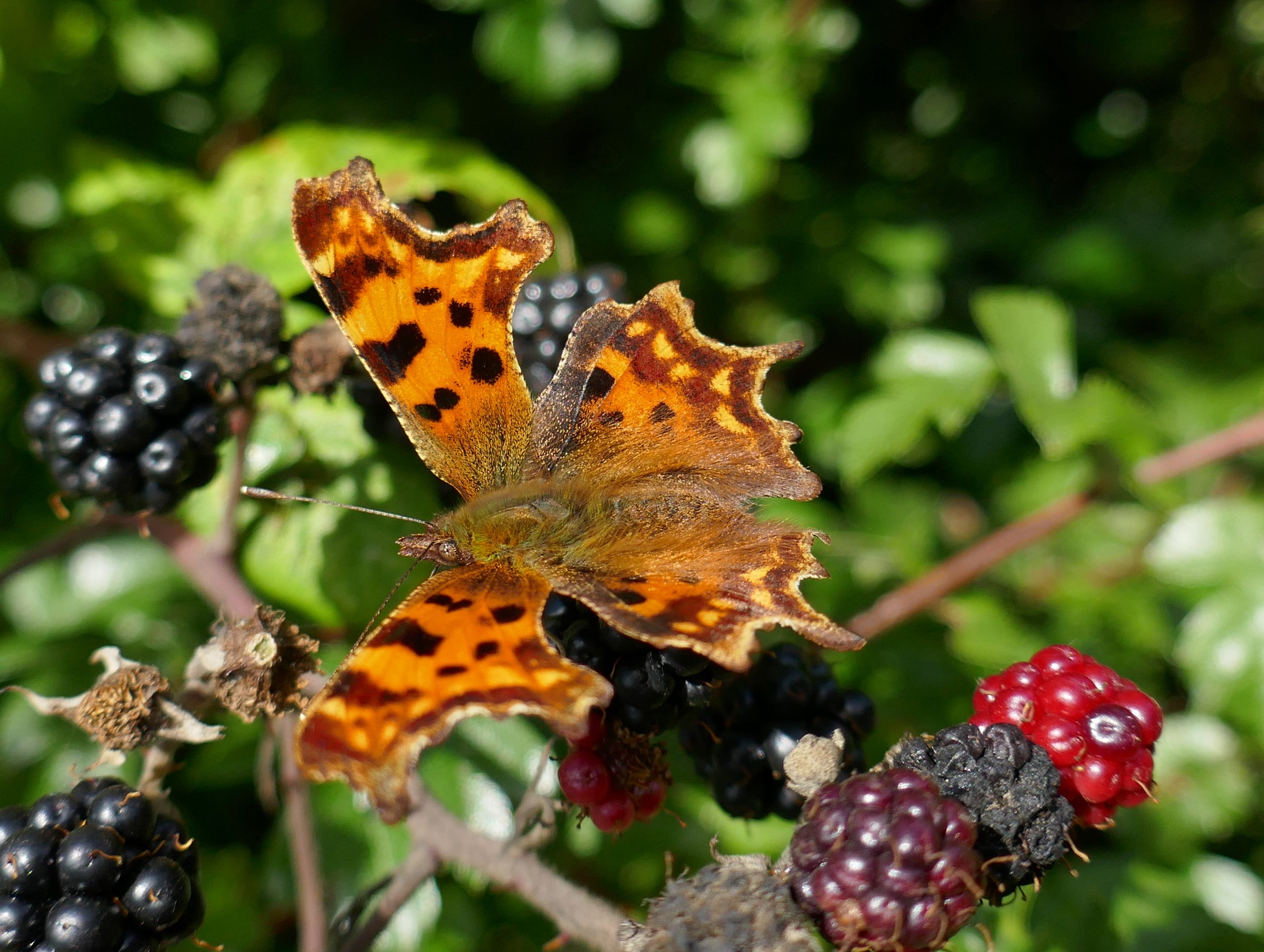
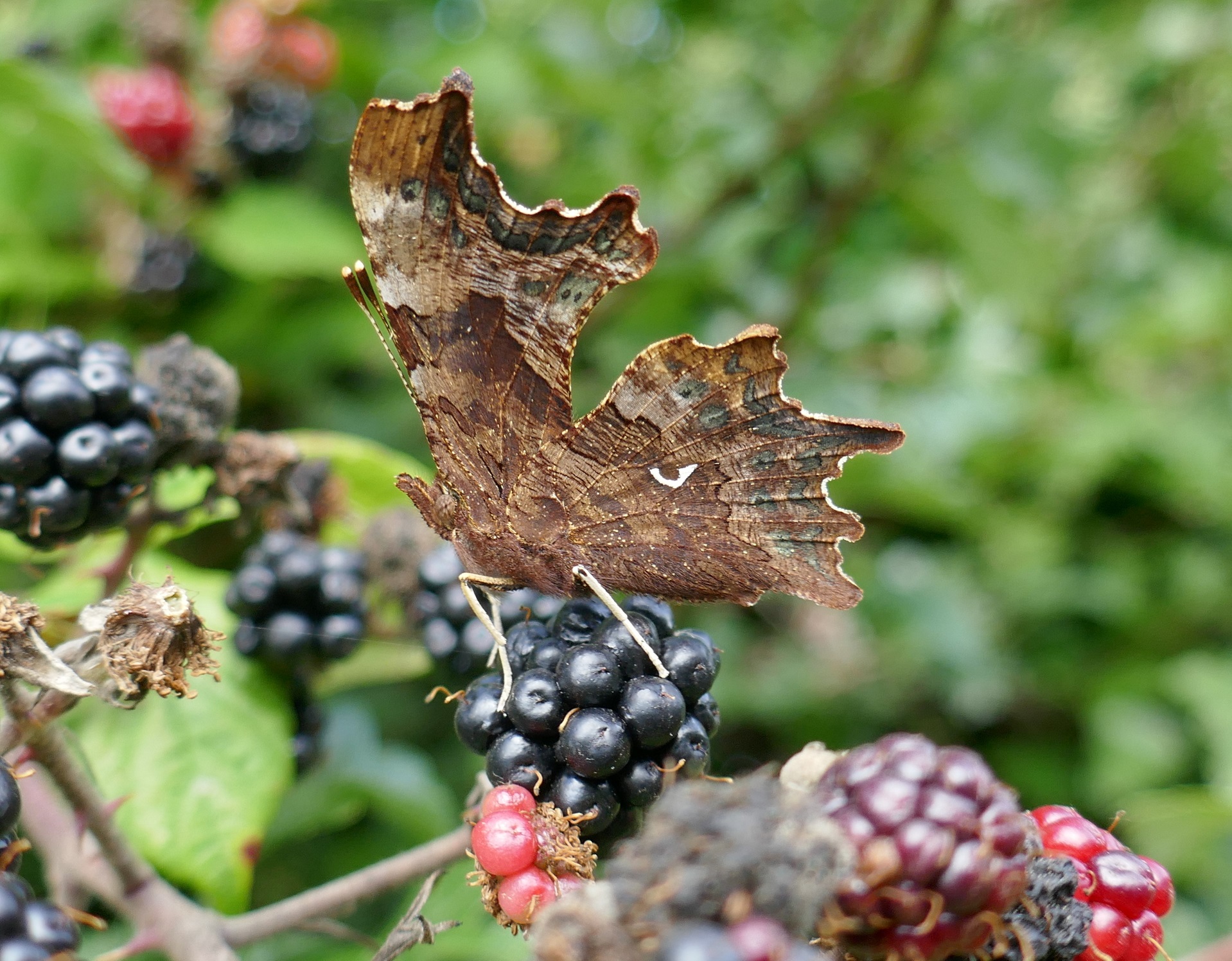
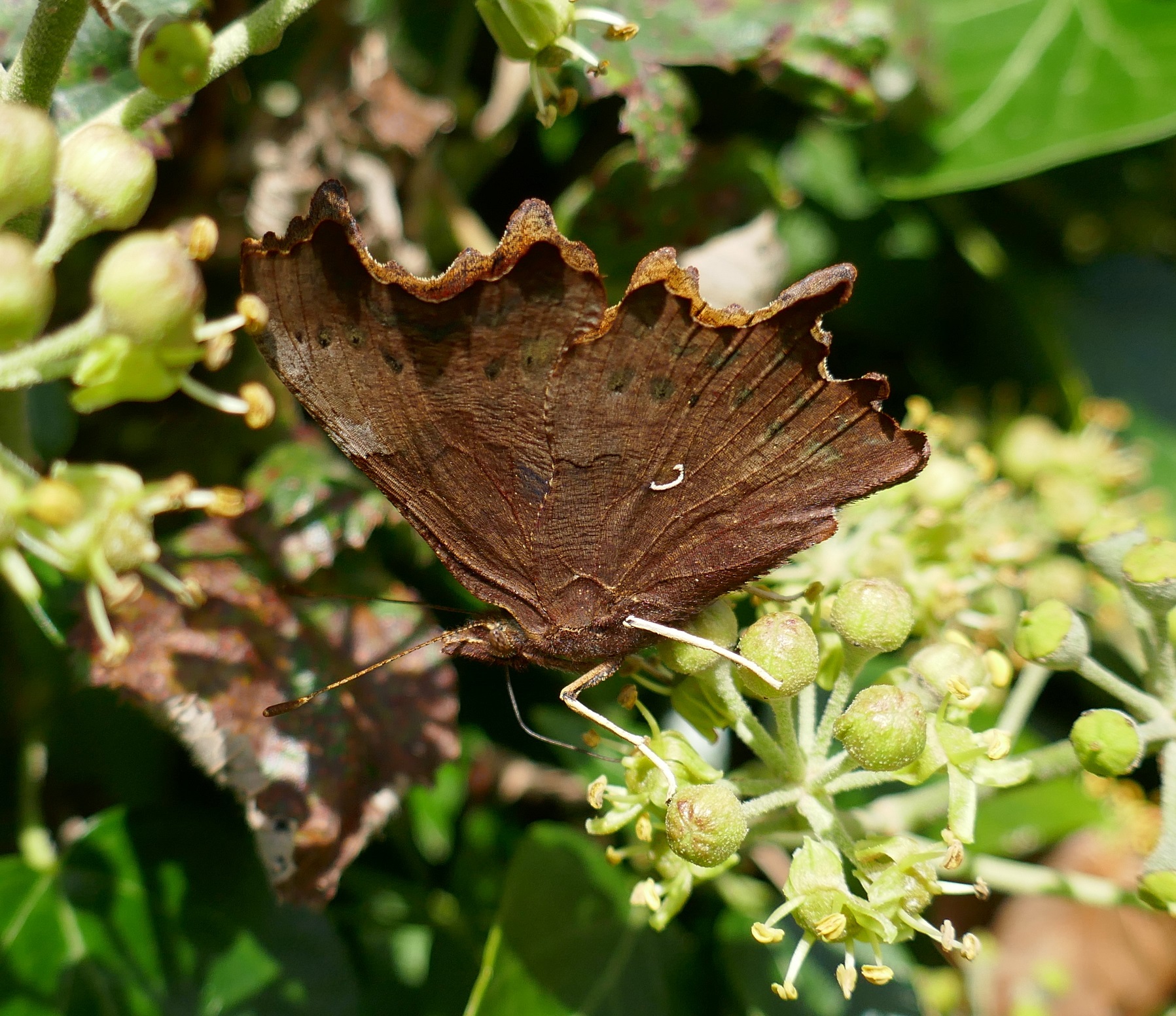
The tiny Small Copper is still adorning our grasslands and the warm sunny August and pleasant September might see the third generation later this month. Two broods are seen each year with the third generation weather-dependent. Today (September 17th) I saw the pristine female shown in the photograph below. Shortly after I took the photograph, she was courted by two males. Her offspring will fly next year’s first generation, typically in May and June.
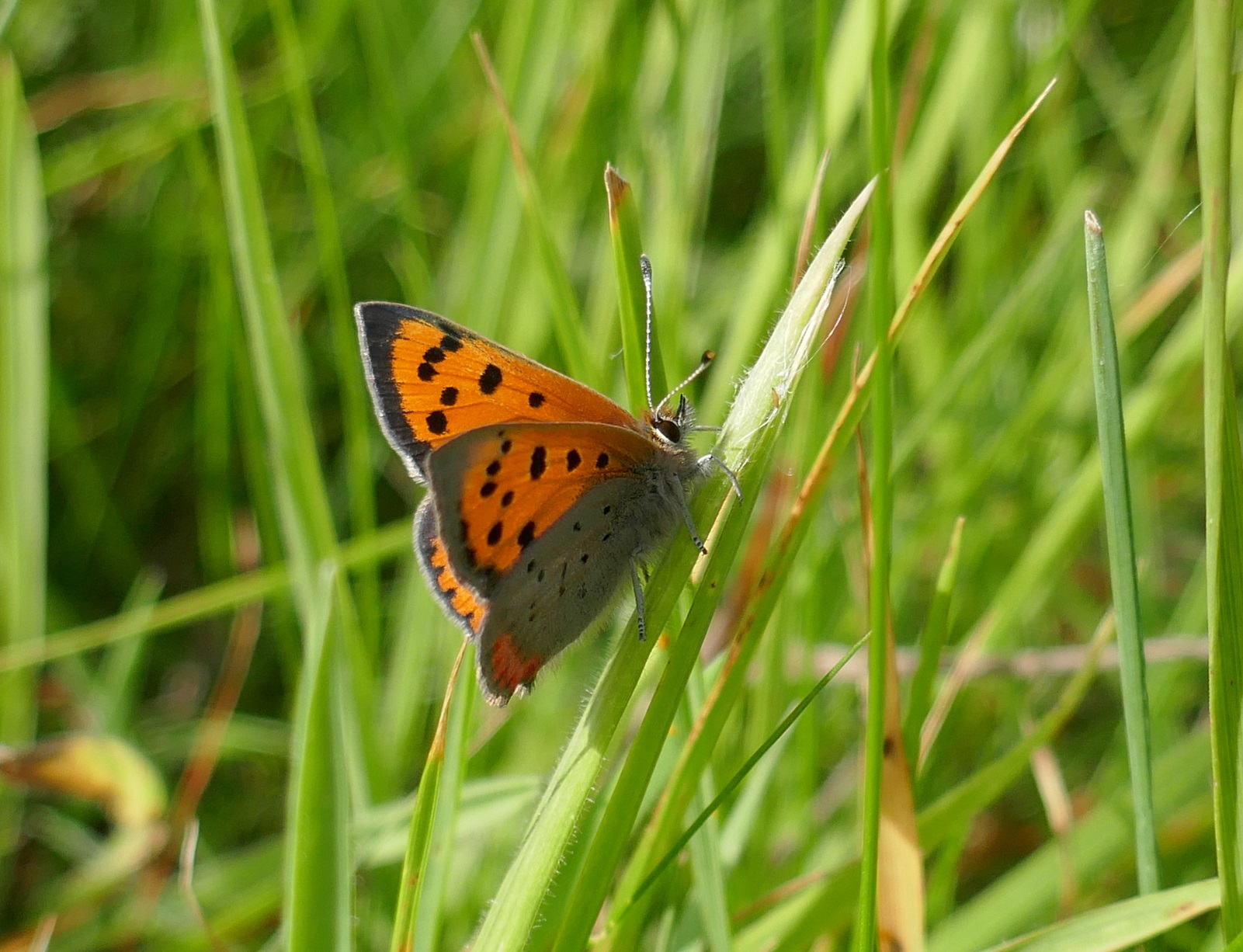
Another gorgeous butterfly, the Red Admiral, is present in our countryside and gardens, and in some abundance in flower-rich areas. It has a broad taste, taking advantage of nectar, fruit juice, and tree sap. By contrast with the previous butterflies profiled here, this will leave our shores this autumn to breed further south, in Europe. A few stay behind to breed in coastal areas but this applies to a small number of individuals, as far as is known.
For now, enjoy this black and scarlet butterfly. It will fly throughout September and October, relying increasingly on ivy nectar as other food sources disappear.
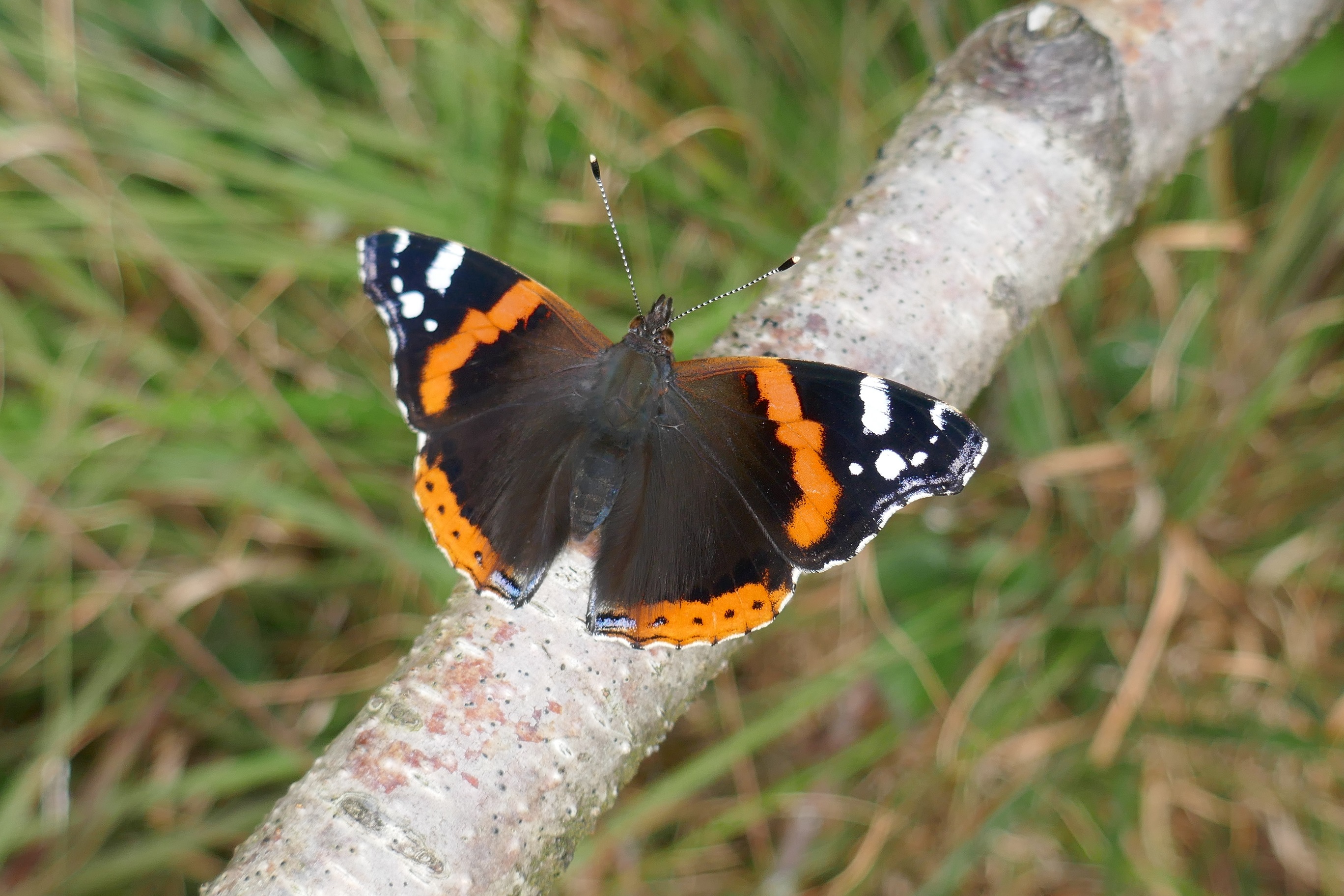
The Small Tortoiseshell rounds off this article. This bright, friendly-looking butterfly is busy feeding up to spend the winter as an adult butterfly. Unlike its relative, the Comma, the Small Tortoiseshell will seek out buildings as well as natural places to over-winter. Like the Comma, its undersides are muted in colour blending it with the dark places chosen for over-wintering. All over-wintering butterflies close their wings when sleeping, so colourful uppersides are not on show. Like all species that over-winter as adults, the Small Tortoiseshell does not enter this state synchronously; rather individuals enter the over-wintering state over several weeks, so the individuals seen at any time during August-October represent those yet to close their wings for the year. This elucidates the paradox of seeing more individuals in spring than appear to have been active during the previous late summer and autumn.
If you are lucky to host a Small Tortoiseshell this autumn or winter, do not release it. Relocate any woken by the central heating to a cool place such as a shed or even a kitchen roll-lined Tupperware box with the lid on, placed in the fridge (never the freezer). Release the butterfly in warm, sunny weather in March. The individual in the photo below has traces of gossamer on its wings resulting from an encounter with a spider’s web. It overcame this survival challenge. Will it survive our long, dark foodless winter? For Small Tortoiseshells that take refuge behind our cupboards, wardrobes, picture frames, mirrors, and within curtain folds, that is for you to decide…
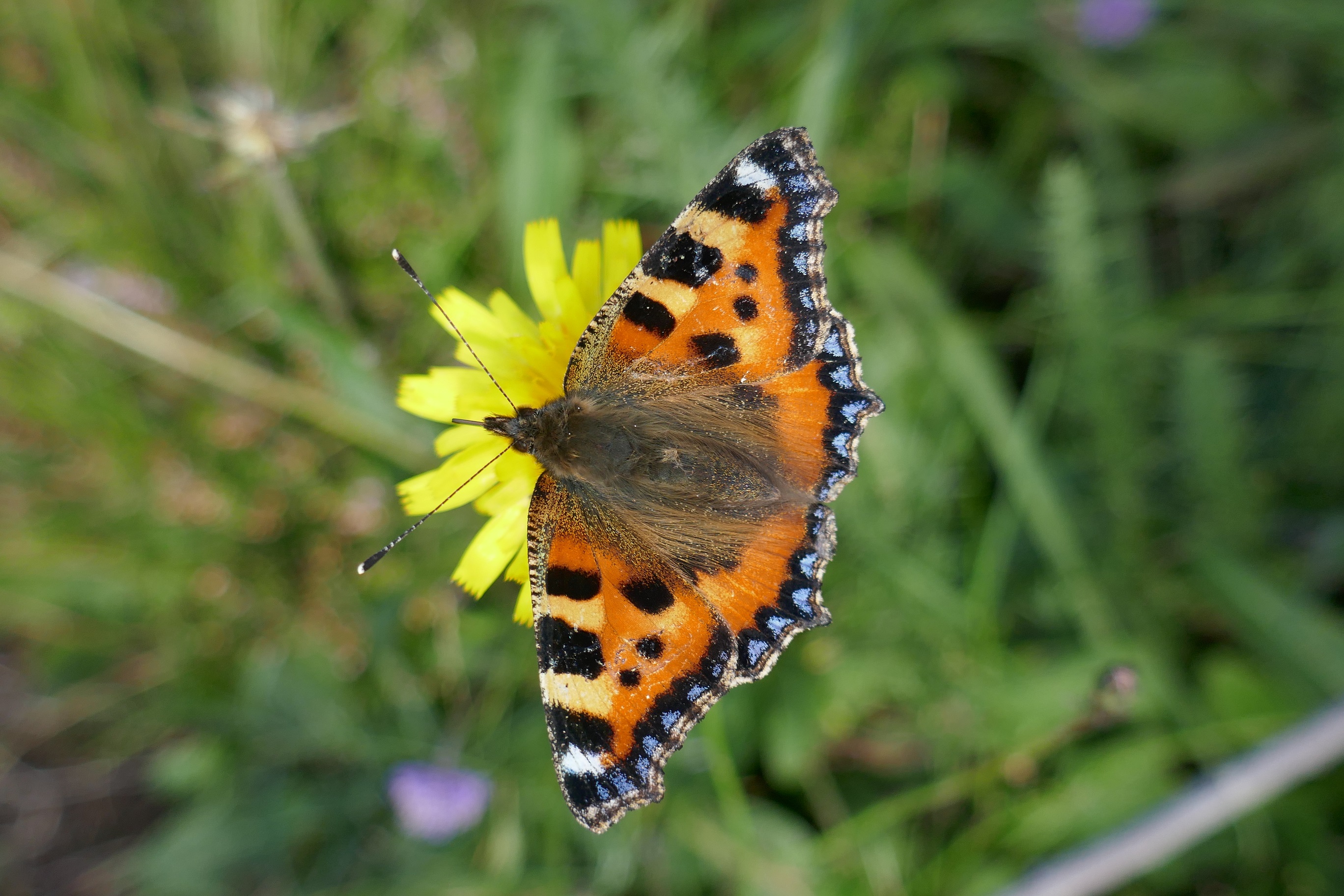
All photos by Jesmond Harding.
Key Reference
Thomas, J. & Lewington, R. (2014) The Butterflies of Britain and Ireland. (Revised edition) British Wildlife Publishing, Dorset.

